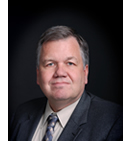From the ATA President, Gregory A. Brent A sense of anticipation and energy can be felt throughout our association as we prepare for the Annual Meeting, October 26-30. Many have already reserved their rooms at the Renaissance Esmeralda in Indian Wells, and we have heard from many others around the world who are planning to join us. With well over 4 months before the meeting, already almost a quarter of our hotel room block is filled for the peak nights. I urge all of you not to delay and to begin making your plans, to reserve your room, and to ensure that you do not miss out on being at the center of the action. Despite all of the other meetings that compete for our time and attention, why is the ATA annual meeting still growing? Dr. T.C. Davison, who was president of the ATA in 1951, stated, "At our annual meetings all of the latest knowledge and ideas are brought together in order that we may become better doctors to serve suffering humanity afflicted with thyroid disease." The balance between clinical and original research presented, combined with the mix of clinicians and scientists have been hallmarks of the ATA meeting for over 50 years. Dr. Frank Lahey captured this distinctive feature of the Annual Meeting in 1953, when he said, "I recognize a harmonious and understanding attitude between those who are interested in almost pure science, bordering on its relation to clinical medicine, and the rest of us...We listened with profit to these scientific papers that have been presented to us." The interactions that take place among ATA members representing the various disciplines involved in treating patients with thyroid disease, as well as with scientists in related fields, is unique and is made possible by bringing all of these professionals under one roof. The types of venues we are able to secure, and the convenience and interaction that are possible when a meeting of this scope takes place in one venue, is a benefit frequently cited by our attendees. These factors promote collegiality, renewal of friendships, and networking that goes on at and between sessions. The beautiful setting of our venue at Indian Wells should be no exception. The program chairs, Martha Zeiger and Tony Hollenberg, and their committee have developed an outstanding program that you can view on our website. The deadline for regular abstracts is June 22, so you still have time to submit an abstract and be a part of the scientific program. The Fellow's track is once again under the able direction of Stephanie Fish and Andrew Gianoukakis. Fellows who stay on after the completion of the University of Colorado program--organized by Chip Ridgway-- will be integrated into the annual meeting. An endocrine surgeon Fellows track is in development, and it will include some shared sessions with the medical endocrine Fellows and some sessions and activities designed specifically for endocrine surgeons. The strength of the ATA is its members, and the more members that engage in the work of the ATA, the stronger we will be. The avenues for participation are many, and we especially welcome new and younger members who may not have been previously involved. Our committees and task forces are the foundation of the ATA. Incoming president Jim Fagin will be appointing committee members designated to begin new terms after the annual meeting. Members who wish to serve on a committee should express their interest to ATA Executive Director Bobbi Smith, or to Jim. Over the years, the ATA has pursued a wide range of creative approaches to generate funds to support ATA programs and activities, and many of these have been quite successful. For example, Steve Sherman launched the ATA Corporate Leadership Council, which is moving forward under the guidance of current development chair Greg Randolph and his committee. A measure of the health of an association, however, is the commitment of its members to providing financial support. Many have faithfully contributed to the ATA throughout the years, and this has allowed us to offer valued initiatives and programs, including research grants, patient education, professional education, programs for fellows, and public health outreach. For many of us, whether introduced to the ATA by a colleague or mentor, the association has been our primary professional home and has served as a foundation that has launched our professional paths. Opportunities to provide financial support to the ATA are many and varied and include contributing to research, special recognition funds, or--the most flexible option--to our general operations. The most direct way to ensure that others can enjoy the same opportunities in the future is to preserve and strengthen the ATA through monetary gifts. I invite you to join with me in making a financial commitment to the ATA this year. I urge you to take an active role in the future of the ATA by volunteering for a committee or task force. And I encourage you to act now and make your plans to join us in Indian Wells for an outstanding meeting and a rewarding personal and professional experience. Best regards,
|

